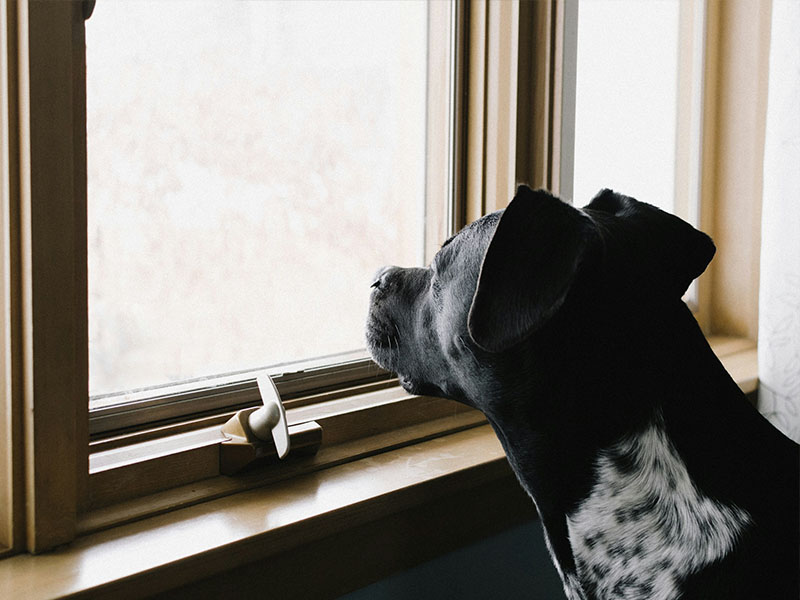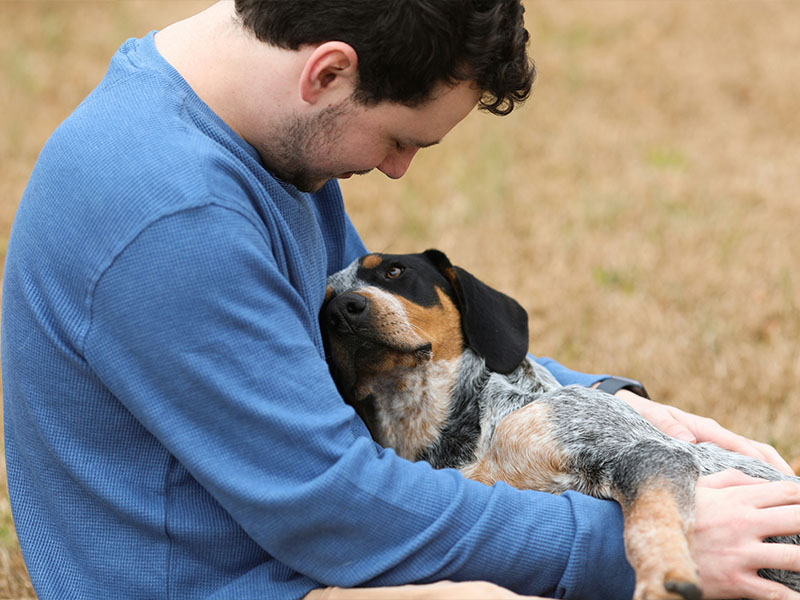The number of registered
animals is growing every day
Published: Oct 18, 2024

The bond that can develop between a dog and its owner can be so strong that the owner begins to wonder if the dog is truly guided solely by instinct and not by reasoning. How do dogs perceive the world, how do they communicate with humans, and are their responses merely learned, trained behaviors?
When you give the command "sit," your dog eagerly sits down, waiting for the next signal from you or a reward for completing the task. When you extend your hand to the dog and ask for its paw, it willingly gives it, seeing a treat awaiting it. Do dogs understand our words? Dogs have earned the title of human companions for a reason. As it turns out, dogs exhibit a high level of intelligence that, when properly developed and stimulated, can truly result in surprising behaviors.
It could be said that there is a pattern in dogs, namely: thinking through association. That is why routine in everyday life plays such an important role in the upbringing and socialization of a dog. When the dog sees a leash, it knows it will soon go for a walk. Hearing the rustle of a plastic bag, it guesses that feeding time is near and often waits for the owner by its bowl. Repeating certain actions causes the dog to associate them, allowing it to react automatically over time, in a learned manner. The same goes for words. Hearing specific commands, the dog associates them with learned behaviors and repeats them as taught by humans.
It can be said that their minds rely on instinct and a very basic thought process. They do not draw conclusions or ponder the morality of their behaviors. For them, it is all about the stimulus and the learned response.

Why do we speak of a dog's unconditional love for humans? As long as the bond between the animal and its owner is strong and based on good foundations, upon returning home, your pet will likely want to greet you, wag its tail happily, and show excitement over your return.
What Does a Dog Think When Left Alone at Home? Above all, they live in the here and now. When you leave, they may express dissatisfaction by wanting to go with you, whining, or watching your silhouette disappear through the window or from the balcony. However, once you're no longer in sight, the dog will react to the situations and stimuli occurring in its environment, such as the sounds of other barking dogs, honking cars, scents filling the home, and searching for their source. It may also associate certain objects with toys or, due to the prolonged time spent alone and the inability to release energy or satisfy other needs, occupy itself with a pair of your favorite shoes. The dog does not reminisce or dwell on past events; your return makes it happy because you are a part of its pack.
For humans, this feeling is very complex, often based on memories, shared experiences with another person, emotions, and numerous dependencies that are part of human, intricate nature. Do dogs miss us? They certainly do not analyze why you are not with them, when you will return, or what happened that made you leave. However, dogs are taught a certain routine. If you taught your puppy from a young age that you come back after a few hours when you leave for work, it will undoubtedly be better at coping with solitude.
However, if you have always been around, and suddenly their routine is disrupted by your absence, the dog may start to feel anxiety and struggle with so-called separation anxiety. Teaching it a new routine, habits, and behaviors in a given situation may be challenging. The dog, wanting to return to the daily routine it has always known, will wait for it. It is more like waiting than emotional longing, as it is in the case of humans.
Separation anxiety in dogs is a set of behaviors that may be associated with longing for the owner. It is, however, the way a dog behaves when it has to stay alone, is too attached to its owner or the human "pack." A dog that is not properly socialized during puppyhood and spends all its time with the caregiver may exhibit behaviors indicating its fear of being alone. Symptoms of separation anxiety include:
- Vocalization
- Scratching at doors
- Muscle tension
- Apathy
- Self-injury
The dog may try to escape outside to follow the owner. If it is in the yard, it may attempt to dig under the fence or find a hole in the fence to chase after the owner's car. The escape attempt driven by the desire to follow the departing owner could result in the dog getting lost.
Therefore, always ensure that your pet has a so-called dog microchip implanted. However, to make identification possible, do not forget to register it in the International Animal Database run by WORLDPETNET. After entering the chip number, the finder can contact the dog's owner and inform them where the pet is waiting for its caregiver.

One thing is certain - dogs have good memories. They do not reminisce, but they do associate certain situations and behaviors with the owner, such as waiting for the caregiver at the usual time of their return from work. This is linked to attachment and treating the human as a member of their pack.
There are many widely available videos on the internet capturing dogs' emotional greetings and surprisingly joyful reactions upon seeing people they haven't met for a long time. Isn't this enough proof that dogs remember?
Dogs do not understand human words in the same way we do, but they can associate specific sounds with certain actions or commands. This allows them to respond to commands like "sit" or "paw" by associating the sound with the appropriate behavior.
Dogs are primarily guided by instinct and basic thought processes. They do not analyze the past or plan for the future in a human-like way. While they may exhibit signs of longing, such as joy upon seeing their returning owner, their emotions are more related to current experiences than deep memories.
Dogs demonstrate intelligence through their ability to learn commands, recognize routine activities like preparing for a walk, and react to various environmental stimuli. Their capacity to associate and adapt to new situations reflects their advanced cognitive abilities.



Marking animals with a microchip is the most durable, effective and completely safe method of quick and reliable identification. Every transponder (chip) has a unique number which enables instant identification of the animal and its owner, helping them reunite faster. However, it is important to remember that a chip is just a transponder with an encoded number. It is not a tracking device and contains no data about the animal or the owner! Therefore, in order to identify a chipped dog or cat, it is necessary that a microchip be registered in a national marked animal database...
Read moreIn today's world, responsibility for animal care has become not only a priority for their owners but also a societal issue. One of the most important tools in ensuring animal safety is the chip database. It allows for the quick and efficient recovery of lost pets, which is crucial for protecting their health and well-being.
The introduction of microchipping has significantly improved the effectiveness of efforts to locate lost animals, reducing stress for both owners and their four-legged friends. Registration in the chip database is increasingly required by local regulations, further highlighting the importance of this technology in ensuring comprehensive care for animals.